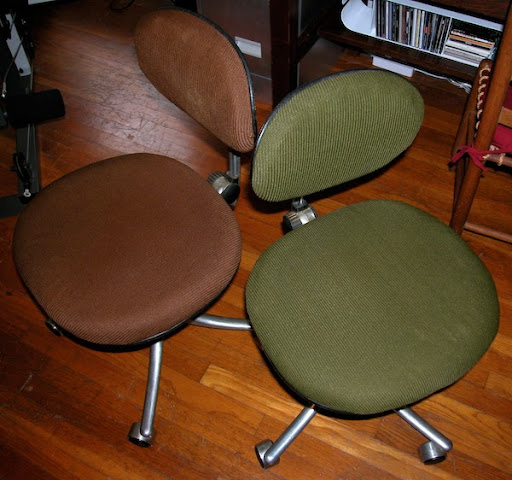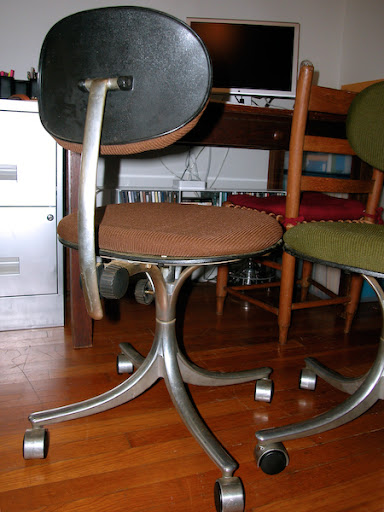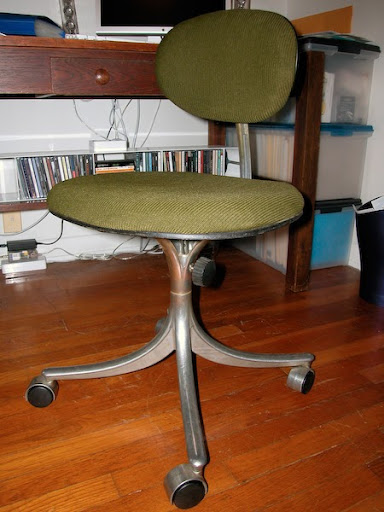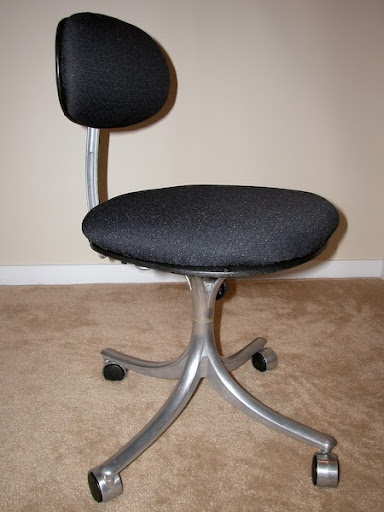I had hoped to continue using them as is, but their foam had deteriorated to the point that sitting down created a poof of orange dust. Timothy and I started to reupholster them shortly after I moved in, though we quickly became sidetracked by buying our house.



Upon disassembly, we discovered a number of challenging aspects to the chairs' construction. The elastic fabric, stretched from a circle to cover the elongated back and seat, was glued to a plastic ring. The foam was custom cast for these chairs, the appropriate shape and contour.

After moving into the house, we picked up the project again. Unable to locate new fabric with the same characteristics, we settled for a non-stretchy black upholstery fabric. Likewise, we made do with a flat square of foam, and bought spray adhesive in lieu of the now-orange industrial glue.
The first major issue we encountered was underperformance of the adhesive. While it was adequate to secure the foam, the fabric would not stick. Discouraged, I thought I would try a drawstring slipcover instead. Before I got started, the dog, still a puppy, decided one evening to chew the foam off both chair backs, which had been sitting in the dining room of no prior interest to her for days.
We have no other office chairs. For years now, we have used antique rope-bottom chairs for both the computer desk and my sewing table. In the interest of avoiding continued discomfort, I finally picked up the project again. The drawstrings work more or less; the seat is not fully secured because the plastic prongs on the ring won't stay snapped to the black plastic support. We'll devise some solution, but in the meantime, it feels great to type this while sitting in a real office chair.

